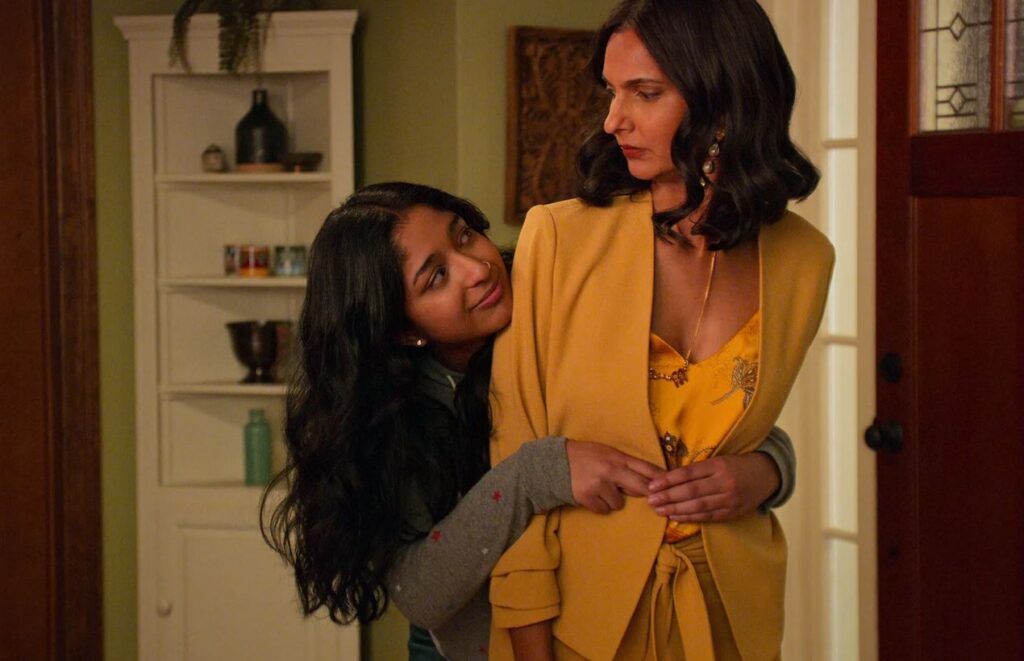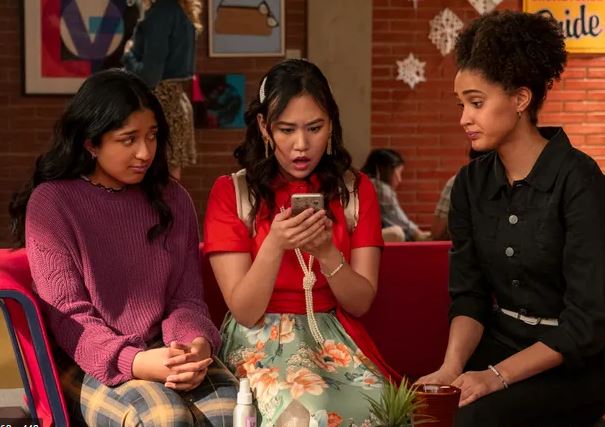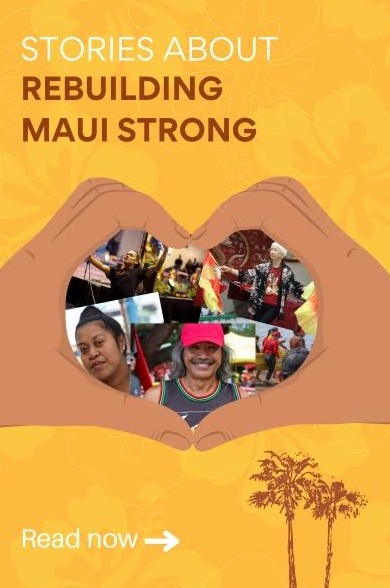By Shree Baphna, AsAmNews Staff Writer
The much-awaited second season of Mindy Kaling’s hit show Never Have I Ever premiered on Netflix this month. Viewers had been left from the previous season with a cliff-hanger hint to a love triangle and an impending move to India for Devi and her family.
The second season picks up right where the first ended, with Devi having just spread her father’s ashes with her mother, Nalini and cousin, Kamala. To be frank, my first impression of the season from the first 2-3 episodes was not favorable. I found them painful to watch. Everything seems staged, and the acting comes across as a little forced.
The prime focus appears to be Devi’s trivial relationships with Ben and Paxton. It presents a rather shallow outlook for the show, along with cringey splashes of hollow humor. Fabiola and Ramona are initially sidelined as characters and seem more like enablers than true friends as Devi schemes how to two-time her boyfriends.
Yes, it is a TV show about a rather immature 15-year-old, but one would think this is a complete regression from how far Devi had come in season one, after patching things up with her mother and starting to come to terms with the immense grief from the loss of her beloved father.
To be honest, I nearly stopped watching after a few episodes. Let’s face it, we have never seen a character that is as chaotic as Devi Vishwakumar. Half the time I was watching the show, I could not help but think how extremely problematic a person like Devi would be in a real-life situation. The sheer lack of logical thinking is absurd, even for a teenage girl.
I truly have no idea what the writers of the show were thinking, when they were striving for ‘character relatability’, especially for South Asians. The amount of self-sabotage this girl indulges in is ridiculously unrealistic. I kept asking myself this question every time Devi makes a terrible decision that affected her and others around her: how far is too far to be forgiven?
BUT, I stuck to it and over the next few episodes, I began to think of Devi’s character as a foil for important sub-plots that address a lot of issues pertinent to the Indian American and Asian American experiences.

Sub-plot 1: The Introduction of Aneesa
The arrival of Aneesa, another ‘cool, smart and pretty Indian girl’ was an extremely forced plot line, at first. Of course, we all expected Aneesa and Devi to be pitted against one another as high-school rivals (that was how the trailer showed it too), and that Aneesa would be the main ‘antagonist’ to Devi’s already frazzled character. However, the season began to show glimmers of hope after revealing that Aneesa and Devi become good friends, and Devi learns the value of having someone who shares similar cultural experiences (but I find it hard to believe that a Californian public school has only two Indian students?!).
As a member of the minority Indian American community myself, I can personally relate to the comfort and security of having a friend who can understand my experiences, speak another language like me, and who can understand nuanced cultural references. Moreover, we begin to appreciate the conscious decision of the show’s writers to not pit women against each other (that too women of color!), as has been historically done in countless movies and TV shows.
Subplot 2: Addressing the issue of eating disorders:
The outburst in which Devi wildly claims Aneesa is “ano” (anorexic), is overheard by the two rumor-mongers of the school, and results in a wildfire spread of gossip. This plotline has its merits because of the decision to address an important topic like eating disorders and the need to fit in, especially from the perspective of a minority student who may constantly be conscious of how different they are from the majority.
In Asian families, eating disorders are not always common topics of conversation. Cultural norms and expectations may not allow young women and men to be as open with such struggles, forcing them to bottle-up and avoid seeking the help they truly need. However, post this initial dive into the topic, Aneesa’s character fades into the background when she begins to date Ben and we never hear or discuss the topic again for the rest of the season.
Subplot 3: Single parenting as an Indian woman:
I am fortunate to never have lost anyone as close to me as a father or husband. Therefore, how people experience and cope with this level of grief is not something I can comment on. However, I do think that Nalini making the choice to pursue a romantic relationship post the loss of her husband shows how she deserves to make her own decisions as a fully-grown woman who knows what is best for her and her family (as we see in the sharp reprimanding Devi gets from her pati, hell yes!).
This plot-line is important because it addresses the concept of being a single parent and attempting to find companionship again after suffering immense loss. In Indian culture, a widow is not always seen to be a good omen. Many are ostracized and are denied the right to re-marry. Seeing Nalini, a successful dermatologist with excellent fashion-sense, start up a relationship with fellow dermatologist Dr. Jackson, is both affirming and combats the stereotype that surrounds widow-hood and single-parenting.
Subplot 4: Being a Woman of Color in a White Man’s World:
Not being taken seriously is something women experience all too often, especially women of color. Kamala, who is constantly proclaimed throughout the show for her beauty, is hardly given any praise for being a brilliant, budding scientist. Moreover, the lack of support she receives from her boyfriend, Prashant, is disappointing.
Surprisingly, Devi is the one who helps Kamala see that she deserves the credit she wants, and addresses the stereotype that South Asian women are ‘demure’ and ‘submissive’. Although cliché, I couldn’t help but cheer in my head when Kamala stands up to her boss and questions her relationship out of respect for herself and her clear talent.
Subplot 5: The Variations within the Asian American Experience and Confronting Western Hegemony:
Paxton explores his Japanese heritage and addresses the cruel history of American crimes against Japanese Americans post WWII. This is a plotline that I appreciate very much. For one, the show takes a dive into a different Asian experience that is more than just Indian. It goes to show how not all Asians can be clubbed under one category, and wide variations exist within.
Second, it tackles the topic of erasing history for the sake of maintaining a clean rap sheet. As we know, the United States has a notorious habit of not owning up to its previous cruelty and inhumane acts. This portion of the episode- while short- does address the lesser known history of Japanese incarceration camps in California. More so, the show takes time to delve deeper in Paxton’s character, and transforms him from a shallow pretty-boy to one who is driven, takes an interest in his family’s history, and is someone who wants to improve himself.
Subplot 6: Addressing the “women are crazy trope”
Although Devi’s actions throughout the show are far from excusable, they earn her the cruel nickname of ‘Crazy Devi’. Labeling anyone, especially women, as ‘crazy’ is something people do too often in current society and is something constantly overlooked. Being emotional does not mean someone is crazy, especially since we think of women as overly so. The redeeming moment arrives when Devi’s therapist very clearly assures her that Devi is not crazy and does not deserve to be called so. Clearly, Devi does not understand the hurt she causes others, because she cannot understand the hurt she is feeling herself.
Subplot 7: Mainstreaming Non-heteronormative teen romances
While I am not a qualified person to understand the finer elements of this, I do appreciate the show’s effort in normalizing teenage queer romances on mainstream television. Fabiola and Eve’s relationship is a consistent part of the season and takes on more development, adding a fresh and welcome contrast to Devi’s and Ramona’s (somewhat messy) relationships. While the heterosexual relationships amongst the friend group are rather problematic and even cruel at times, we see Eve’s and Fabiola’s relationship go from strength to strength as a lesson in acceptance and being true to who we are.
The second season overall, is a colorful, action/drama/emotion-packed 10 episodes with Gen-Z references galore. While there is room for improvement in nuanced handling of certain topics, it does its best to cast a wide net around the most pertinent issues that have a specific intersectionality with the Indian American or POC experience. It may be discouraging at first, but does not fail to deliver entertainment with a wide range of emotional performances.
AsAmNews has Asian America in its heart. We’re an all-volunteer effort of dedicated staff and interns. Check out our new Instagram account. Go to our Twitter feed and Facebook page for more content. Please consider interning, joining our staff, or submitting a story or making a contribution.






